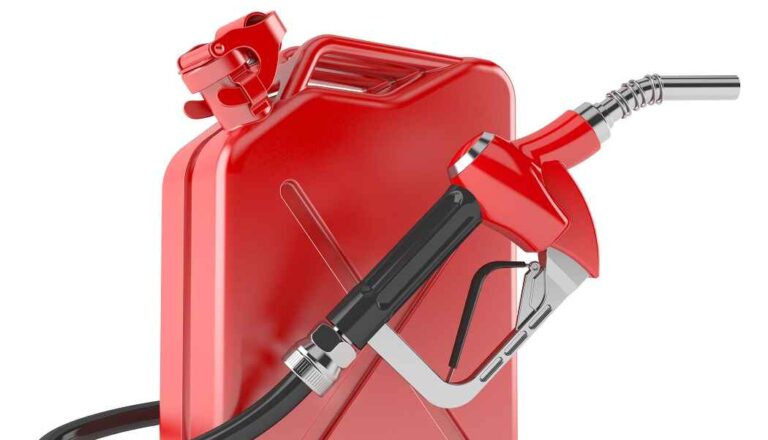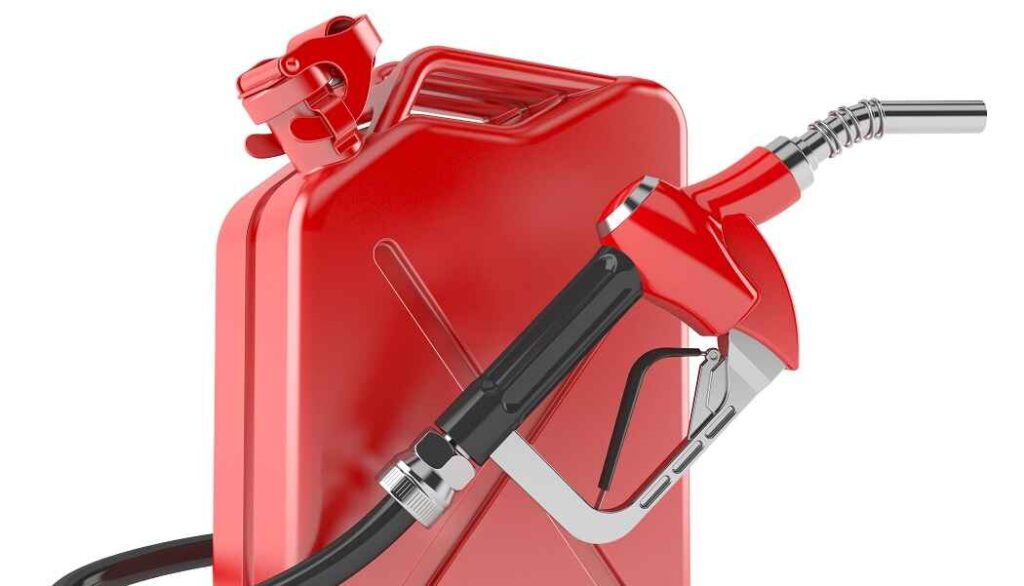
Does Gasoline Remove Paint? [Things to Know]
In the realm of DIY projects, home improvement, and automotive maintenance, questions often arise about the effectiveness of unconventional solutions. One such question that frequently pops up in various forums and discussions is-“Does gasoline remove paint?”

With so many conflicting opinions and anecdotes circulating, it’s time to put this debate to rest. Let’s find out the chemistry behind gasoline and paint, assess the risks and safety considerations, and finally, provide expert advice on the best practices for paint removal.
Does Gasoline Remove Paint?
Gasoline is a flammable liquid commonly used as fuel for internal combustion engines. It acts as a solvent and can dissolve certain materials, including paint, to some extent. The impact of gasoline on paint depends on factors like the type of paint, duration of contact, and environmental conditions.
Latex or oil-based paints are particularly vulnerable to gasoline exposure because gasoline can break down the organic compounds present in these paints. When gasoline comes into contact with paint, it can dissolve the paint’s chemical bonds, leading to softening, blistering, or bubbling of the paint. Extended contact with gasoline can cause more extensive damage, especially on older or damaged paint surfaces.
High temperatures and humidity levels can accelerate the chemical reactions, making gasoline’s impact on paint more noticeable. If gasoline spills on a painted surface, it is essential to remove it promptly using a clean cloth or paper towel. Washing the area thoroughly with soap and water can help minimize potential long-term damage.
Keep in mind that gasoline is highly flammable and must be handled with care. Always use it in a well-ventilated area, away from open flames or sparks, and consider wearing protective gear. Additionally, before using any cleaning agent or solvent on painted surfaces, perform a test on a small inconspicuous area to ensure it does not cause adverse effects.
Remember to exercise proper safety precautions when dealing with gasoline to avoid fires or other hazardous situations.
Does Gasoline Dissolve Spray Paint?
Yes, gasoline can dissolve spray paint to some extent. Gasoline is a solvent, meaning it has the ability to dissolve certain substances, including paint. Spray paint typically consists of pigments and binders suspended in a solvent carrier, which allows the paint to be easily sprayed onto surfaces.
When gasoline comes into contact with spray paint, it can start to dissolve the paint’s solvent carrier, causing the paint to soften and possibly spread or run. This process can lead to the paint losing its adherence to the surface it was applied to, potentially creating streaks or removing the paint altogether.
Advantages and Disadvantages of Using Gasoline as a Paint Remover
Gasoline, being a solvent, can dissolve paint quickly and appears to be an efficient solution. It comes with a range of advantages that outweigh its drawbacks. Here we will explore the advantages and disadvantages of using gasoline as a paint remover, shedding light on the safety risks and environmental concerns associated with this approach.
Advantages of Using Gasoline as a Paint Remover:
Effective Solvent: Gasoline is a powerful solvent that can effectively dissolve and remove various types of paints, including oil-based paints, enamels, and some acrylics.
Fast Action: Gasoline acts quickly. It will reduce the time and effort required to remove paint from surfaces, especially when compared to traditional scraping methods.
Easily Accessible: Gasoline is widely available at gas stations and automotive stores, making it convenient for users to purchase and use as a paint remover.
Cost-Effective: Compared to commercial paint removers, gasoline is relatively inexpensive, offering a cost-effective solution for paint removal tasks.
Versatility: Gasoline can be used on a variety of surfaces, such as metal, wood, and concrete, making it a versatile option for paint removal projects.
No Harsh Chemicals: Gasoline doesn’t contain harsh chemicals typically found in commercial paint removers, making it a more environmentally friendly choice.
Non-Corrosive: Gasoline is generally non-corrosive to many surfaces, reducing the risk of damage to the substrate being cleaned.
DIY Solution: Using gasoline as a paint remover allows for a do-it-yourself approach, eliminating the need for specialized equipment or professional assistance.
Disadvantages of Using Gasoline as a Paint Remover:
Highly Flammable: Gasoline is highly flammable and poses a significant fire hazard, especially when used indoors or near open flames, sparks, or heat sources.
Toxic Fumes: Gasoline emits harmful vapors that can cause respiratory issues, dizziness, and nausea when inhaled, making it potentially dangerous for health if proper ventilation is not ensured.
Environmental Concerns: Gasoline is a petroleum-based product, and its use as a paint remover can lead to soil and water pollution if not handled and disposed of properly.
Health Risks: Direct contact with gasoline can irritate the skin and eyes, leading to potential health risks for users, especially if they are not wearing appropriate protective gear.
Evaporation: Gasoline evaporates quickly, which can lead to excessive use and the need for additional applications during the paint removal process.
Regulatory Restrictions: The use of gasoline as a paint remover might be restricted or regulated in some areas due to safety and environmental concerns, limiting its availability and usage.
Things to Consider When Using Gasoline as a Paint Remover
Using gasoline as a paint remover can be effective, but it also presents serious safety and health risks due to its flammable nature and harmful fumes. It is essential to consider various factors to ensure you handle gasoline safely and efficiently when using it as a paint remover. Here are the things you need to carefully consider:
Safety Precautions:
- Always work in a well-ventilated area. Use the gasoline outdoors if possible to avoid the buildup of vapors.
- Wear appropriate personal protective equipment (PPE), including safety goggles, gloves, long-sleeved clothing, and a respirator mask designed for organic vapors.
- Keep the gasoline away from sources of ignition, such as open flames, sparks, and electrical equipment.
- Do not smoke while using gasoline or near gasoline fumes.
- Have a fire extinguisher nearby in case of emergencies.
Surface Compatibility:
- Make sure gasoline won’t damage the material you’re trying to remove paint from. Gasoline can dissolve some plastics and rubber, so it may not be suitable for certain surfaces.
- Test a small, inconspicuous area before applying gasoline to the entire painted surface to ensure it won’t cause damage or discoloration.
Proper Application:
- Use a non-metallic container to hold the gasoline. Metal containers can cause a reaction with gasoline and potentially lead to leakage or a fire hazard.
- Apply the gasoline using a brush, cloth, or sponge rather than spraying it to reduce the risk of accidental spills or splashes.
- Allow the gasoline to sit on the painted surface for a few minutes, but avoid letting it evaporate completely to maintain its effectiveness.
Disposal:
- Gasoline used as a paint remover becomes contaminated with paint particles, making it hazardous waste. Properly dispose of the used gasoline according to local regulations and guidelines.
- Do not pour the used gasoline down the drain or throw it in the regular trash.
Storage:
- Store gasoline in a well-ventilated and cool area, away from direct sunlight and potential ignition sources.
- Keep gasoline out of reach of children and pets.
Emergency Response:
- Have a clear plan in case of accidental spills, fires, or exposure to gasoline fumes. Know how to handle such situations and have access to emergency services if needed.
How to Use Gasoline as a Paint Remover?
If you choose to proceed with using gasoline as a paint remover, extreme caution should always be exercised when handling gasoline. Here is a details guide on how to apply gasoline with utmost care-
Step 1: Safety Precautions
Before you begin, ensure you have the necessary safety equipment: chemical-resistant gloves, safety goggles, a face mask, and suitable ventilation in the workspace. It is crucial to work in a well-ventilated area, preferably outdoors, to reduce exposure to fumes.
Step 2: Prepare the Area
Move the painted object to a well-ventilated and open space, away from any ignition sources, and place it on a protective surface like a drop cloth or cardboard.
Step 3: Test on a Small Area
Before applying gasoline to the entire painted surface, conduct a small test on an inconspicuous area to ensure it does not damage the underlying material. This step will help you determine the appropriate dwell time without causing harm.
Step 4: Apply Gasoline
Using a clean cloth or sponge, apply a small amount of gasoline to the painted surface. Avoid splashing or creating excessive fumes.
Step 5: Allow Dwell Time
Let the gasoline sit on the painted surface for a few minutes. The dwell time will depend on the thickness and type of paint.
Step 6: Scrape Off Paint
After the dwell time, gently scrape off the softened paint using a plastic or metal scraper. Be careful not to damage the underlying surface. If the paint doesn’t come off easily, reapply gasoline and wait a bit longer.
Step 7: Clean the Surface
Once the paint is removed, wipe the surface with a clean cloth dampened with water to remove any residue and gasoline.
Step 8: Dispose of Gasoline Properly
Gasoline-soaked rags or materials can be a fire hazard. Dispose of them properly by placing them in a tightly sealed metal container and store it in a safe location away from any heat source until you can properly dispose of them according to local regulations.
Step 9: Wash Up
After completing the paint removal process, wash your hands thoroughly with soap and water. Also, clean any tools or materials used in the process.
Step 10: Final Disposal
Dispose of the gasoline responsibly, following local guidelines for hazardous waste disposal.
Final Words
Gasoline indeed has the capability to remove paint. It contains potent solvents that can effectively dissolve and break down paint molecules, leading to paint removal from surfaces. But, it is vital to take necessary safety precautions and avoid its use near open flames or in confined spaces.
